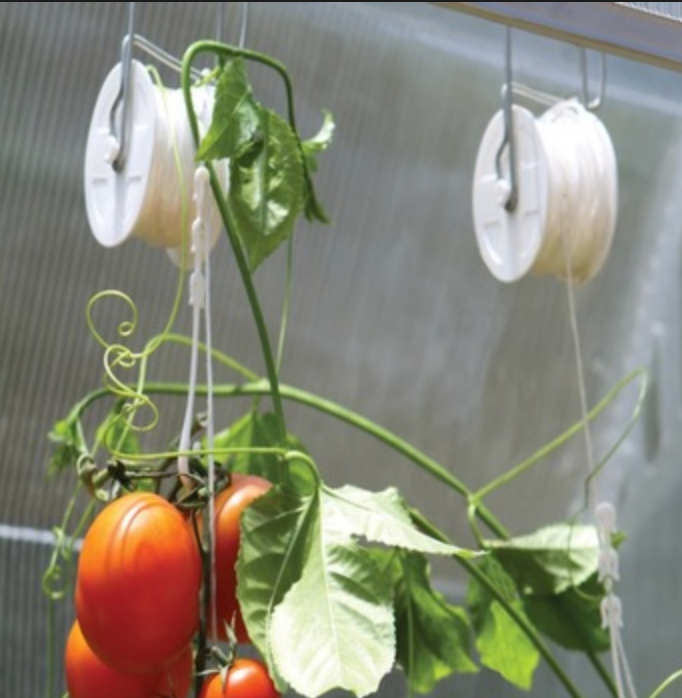Stake and wire trellis systems are ideal for indeterminate tomatoes. With these trellis systems, tomato plants can be guide upward easily so as to have better ventilation and get away from most pests on the ground. Moreover, each stem will have a string to secure it, and it will also be convenient to prune off additional suckers.
Referring to the features of indeterminate tomatoes, the support systems should be tall and strong enough because these crops grow like vines and can have 10 to 12 pound weights required to be supported.
How to Stringing up Tomatoes?
First, you need to select tall and strong posts with a line of strong high-tensile wire, and then, to drive the posts into the soil every 20 feet. In addition, the wire should be stretched tightly between two posts.
Second, you are supposed to tie a length of twine to the wire at the points where a vine needs to be supported. And then, in order to attach the twine to the base of the crop, what you need to do is threading the twine through a tomato trellis clip that designed to encircle the vine securely and gently. Meanwhile, it is also available to attach the twine to your crop with a knot instead of a trellis clip, but you would better take care that a loosely tied knot is necessary because a tight knot can damage the crop when the crop grows. Moreover, considering sustainable farming, the hanging strings are ideal to be biodegradable sisal trellis twine.

Finally, as time goes by, more trellis clips will be required to attach the string and the vine growing longer. However, if you are not willing to have additional clips, the vine will twist around the string. In this situation, the solution for you is to make the vine twist in the same direction and avoid from unwinding the string you have twisted, which is labor intensive, but more beneficial to pruned indeterminate tomatoes than the basket-weave method.
In a hoop house, the hanging-string system written above are available, but that kind of system is seldom seen within protected-cultural settings. Pipes or wire set above the crop rows are commonly used in those settings since the hanging strings can be attached to the rows easily. By this mean, it is unnecessary to install posts inside your hoop house while the place becomes more suitable for a taller trellis during the longer growing season.
Roller Hook
Using roller hooks is also an option of the hanging-string method for greenhouses and hoop houses. With those strong hooks, the strings overhead are able to get attached easily. At the same time, they are allowed to be lowered and leaned conveniently when outgrowing their vertical space in the greenhouse. Thus, a spool can be attached at the wire overhead, and you are capable of reeling out the string nearly one foot each time so as to move the crop to other positions and keep them healthy if the crop grows out of their cultivation space. Otherwise, the vine can break at the bottom.

At the end of this passage, to prevent your crops from growing out of control in cultivation space, it should be noted that the crop needs to be planted every two feet in double rows.
